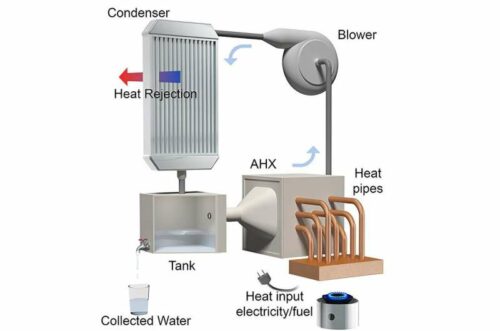The prototype has achieved its target of producing 5 litres of water per day per kilogram of adsorbent material.

University of Utah engineering researchers have made significant strides in atmospheric water harvesting (AWH), which could provide clean drinking water to billions facing chronic shortages. Their research introduces a compact rapid cycling fuel-fired AWH device. This prototype adsorbent materials to extract water molecules from non-humid air and then apply heat to convert them into liquid form. The core of this technology lies in hygroscopic materials, specifically a metal-organic framework (MOF) called aluminum fumarate. MOFs, which team likens to rearrangeable Lego blocks, have an intrinsic affinity for water, making them ideal for gas separation. They selectively adsorb water vapor from the air while leaving other components behind. This specificity is crucial for efficient water harvesting in arid environments.
The prototype uses panels made of aluminum fumarate to trap water molecules on their surfaces. The team highlights that these adsorbent materials boast an immense internal surface area, with just one gram covering as much area as two football fields. This vast surface area allows the material to capture significant amounts of water. The device’s two-step process begins with water adsorption onto the MOF surfaces. The water is then precipitated into liquid by applying heat from a standard-issue Army camping stove. This heat reverses the exothermic water-collecting process, rapidly releasing the trapped water molecules and facilitating condensation at ambient temperature.
The military’s interest in this project stems from the need to keep soldiers hydrated in remote areas with scarce water sources. The compact water generation unit could provide soldiers with water on demand, reducing the need to carry large quantities of water. Beyond military applications, the technology addresses broader water scarcity issues. They envision this system meeting households’ daily drinking water needs and significantly impacting civilian water consumption. This technology offers an alternative to solar-powered systems, which are limited by daylight and require additional weighty batteries, making it a promising solution for regions with low humidity.






